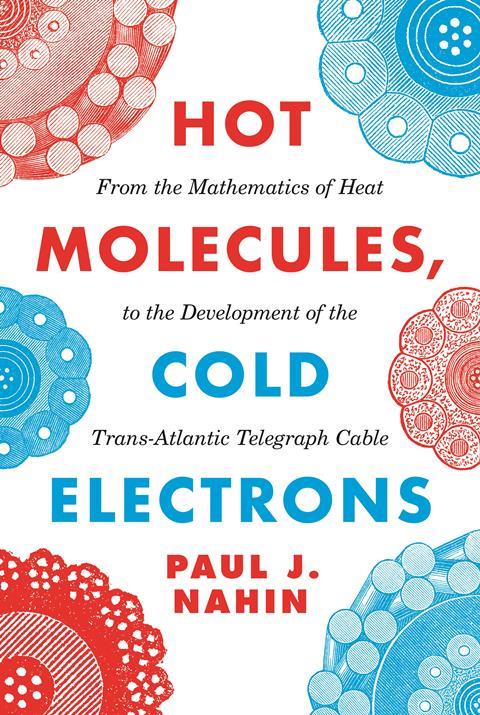Paul Nahin
Princeton University Press
2020 | 212pp | £22
ISBN 9780691191720

In Hot Molecules, Cold Electrons, Paul Nahin explores how classical mathematics can be used to solve the heat equation and how this was used for the transatlantic telegraph cable. The book has made for a great lockdown read alongside my virtual labs, and I’ll be getting some more of Nahin’s books to keep my maths skills on point.
The book really did highlight how rusty my maths skills are, but my working through some of the proofs gave me the confidence to read on. I enjoyed the historical aspects and the more applied chapters, where I found myself solving the heat equation for different systems. It’s in these later chapters where the elegance of Nahin’s writing shines though, artfully weaving history and context into what could otherwise be very dry mathematical derivations. Instead, the author creates a story, a journey though history and science.
I admire the way Nahin encourages the reader to actually do the maths. It gives the reader a true understanding of not only the mathematics underpinning the scientific concept of heat but also why it is needed. Nahin uses shaded boxes, much like a textbook, as an aside with suggestions to do this – I found this very effective. Nahin also offers a notes section, which I found easy to get lost in, looking up papers, books, and exploring mentioned mathematicians and physicists.
This is very much a book for scientists, although the first chapter often boasts how it can be read with a freshman understanding of calculus. While this might be true for the most part, you have to be confident in your maths skills or willing to do a little side reading to fully engage with the content, which can be daunting at times. But Hot Molecules, Cold Electrons has provided me with a new perspective on what I thought to be a rather tedious topic.
The book is much like a how-to guide, leading you through the required deviations and assumptions to reach the desired endpoint. I would recommend it to anyone who wants to work out their maths muscles and learn something along the way.












No comments yet